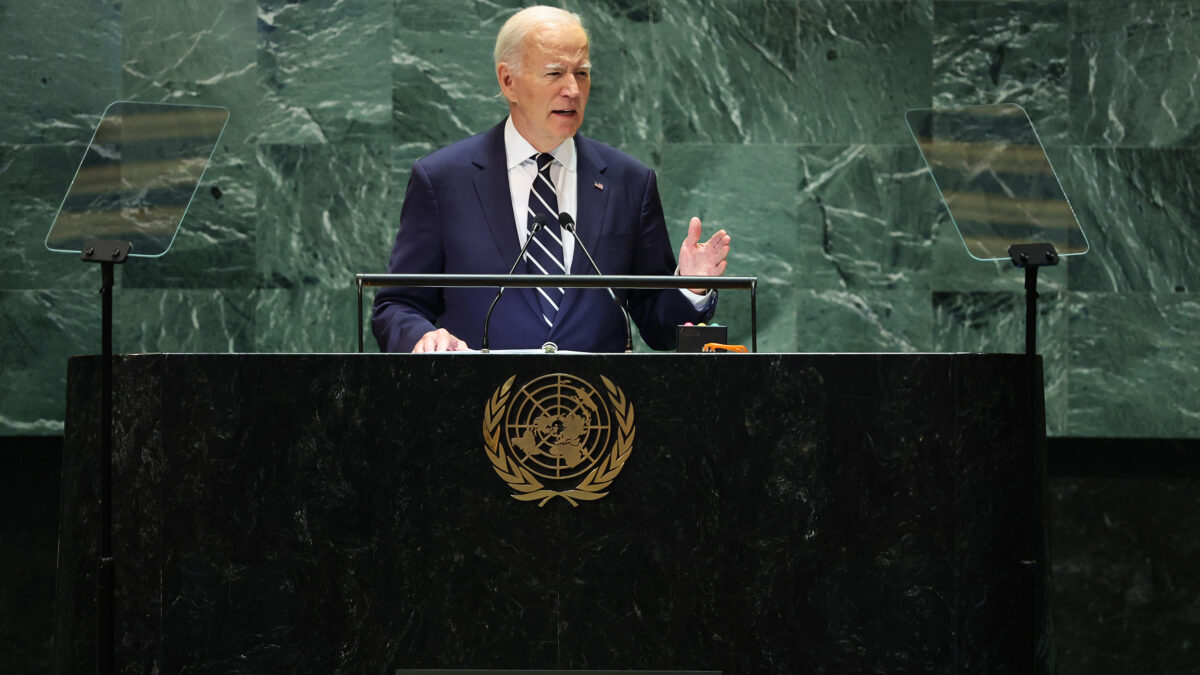A Look Back at Biden’s Presidency: Accomplishments and Legacy

Joe Biden exited the White House on Monday, Jan. 20, concluding his first term as president of the United States. Despite his 57% approval rating during his first run, Biden dropped out of the presidential race for a second term and is exiting the office with a much lower approval rating of 42.2%, according to a Gallup poll.
President Donald Trump is back in office and has begun enacting many of the policies and promises he made during his campaign run, backtracking on many of the Biden administration’s policies. Now that Biden’s term has come to an end, let’s take a look at what the Biden administration was able to accomplish over the last four years.
Inflation Reduction Act of 2022
Signed into law in August 2022, the Inflation Reduction Act intends to lower energy costs, reduce carbon emissions, bring improvement to Part D benefits, and allow Medicare to negotiate with drug companies that provide certain drugs through Medicare. Additionally, this allows a $2,000 annual cap that patients will have regarding out-of-pocket cost exposure when purchasing prescription drugs.
The Inflation Reduction Act has been implemented as a 10-year plan, with the Center for American Progress estimating the IRA to be making budgetary changes by 2028. The fate of this act is unknown, as the Trump administration plans to cut IRA spending and roll back Biden’s climate and energy plans.
Butch Lewis Act
The American Rescue Plan included the Butch Lewis Act and was signed into law in March 2021. With this act in place, the United States Treasury can provide financial assistance to multiemployer pension plans and ensure workers and employers are being paid their full benefits. The act was originally introduced in 2017 and 2019 but was turned down before being reintroduced in 2021. According to the Pension Rights Center, the Act is expected to protect over 1 million pensions.
Student Loan Assistance
During his campaign run, Biden made several promises to borrowers for student loan forgiveness and new repayment plans. The initial proposal made by the Biden administration was to forgive $10,000-$20,000 in student loan debt for lower to middle-income borrowers, but this was blocked by the Supreme Court in 2023. Despite this, the Department of Education has canceled nearly $190 billion in student loan debt through programs such as Public Service Loan Forgiveness, the Saving for Valuable Education plan (SAVE), and several more programs.
The SAVE plan, introduced in October 2023, reduces monthly student loan payments to 10% of a borrower’s discretionary income and provides forgiveness for the remaining balance after 20 years. Before exiting office, Biden issued $600 million in student loan forgiveness to borrowers through Borrower Defense to Repayment as well as relief for borrowers who qualified for discharges under the Public Service Loan Forgiveness program. While this brought great benefits to borrowers, an injunction has been issued, preventing the U.S. Department of Education from implementing parts of the SAVE plan.
War in Gaza
Following the Hamas-led Oct. 7 attack on Israel, Biden took a strong stance assuring the United States’ commitment to help Israel, pledging to help secure all hostages that were taken during the attack. Biden was the first president to travel to Israel during wartime.
Conflicting views on Biden’s stance with Israel caused protests and boycotts throughout the U.S. While many urged Biden to propose a cease-fire, Biden originally stated that a cease-fire would only give Hamas more time to plan another attack. Despite this, in his final address, Biden announced a cease-fire and hostage exchange deal between Israel and Hamas, ultimately symbolizing an end to the conflict. In his address, he highlighted that collaborating with his national security team and the Trump administration was essential to finalizing a deal.
LGBTQ+ Support
On his first day of being sworn into office, Biden signed an executive order directing all federal agencies to implement the Supreme Court’s 2020 Bostock decision, which protects employees from discrimination based on sexuality or gender identity.
Along with this, a federal ban was implemented on sexual discrimination to include sexual orientation and gender identity as protected classes. This executive order brought protection to young people in school facilities such as restrooms, locker rooms, and access to sports programs.
Karine Jean-Pierre was promoted to White House Press Secretary and assistant to the president, making her the first Black woman and first out queer person to serve as press secretary.
Although Biden made strides for the LBGTQ+ community within his first few days in office, Trump signed an executive order on his first day in office proclaiming that the U.S. government will recognize only two biological sexes.
Appointing Judges
During Trump’s first term, he set a record with 234 judicial confirmations over four years. In comparison, Biden surpassed that with 235 confirmations, appointing more women to the bench than any other president in history. Women make up 60% of the 235 confirmations, comprising 37% women of color, 26% white women, 22% men of color, and 15% white men. Biden created a historical shift by appointing Ketanji Brown Jackson, the first Black woman to serve on the U.S. Supreme Court, on June 30, 2022.
Biden concluded his term marking his legacy through significant achievements, expanding protection for underrepresented groups, and enacting policies aimed at the betterment of healthcare and climate change.
Despite pushback, challenges, fluctuating approval ratings, and his unforeseen drop out of the 2025 presidential election, the Biden administration showed historic efforts that will create an impact on the United States. With his time in office at an end, many of the changes he implemented could remain intact and continue to shape the nation.



